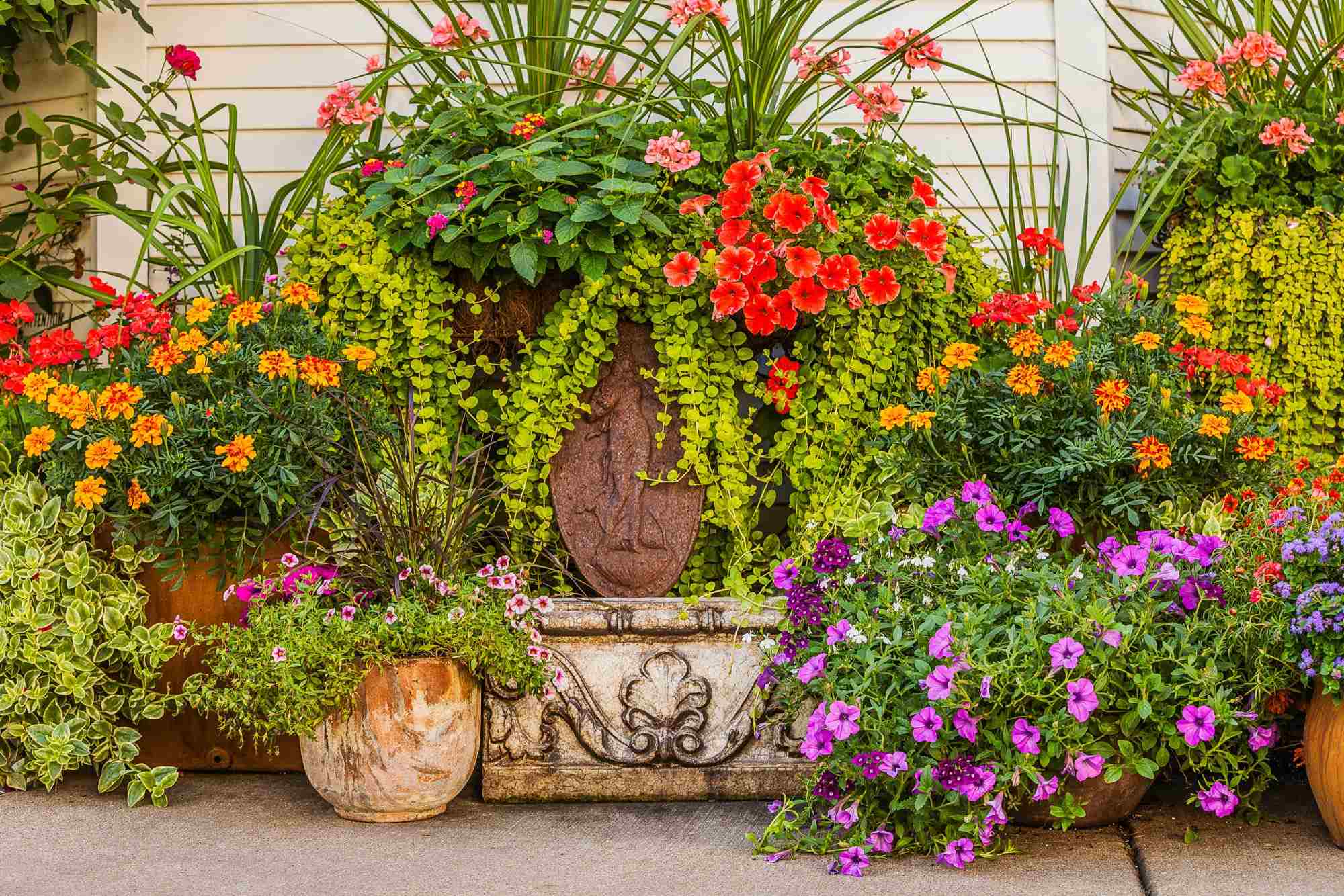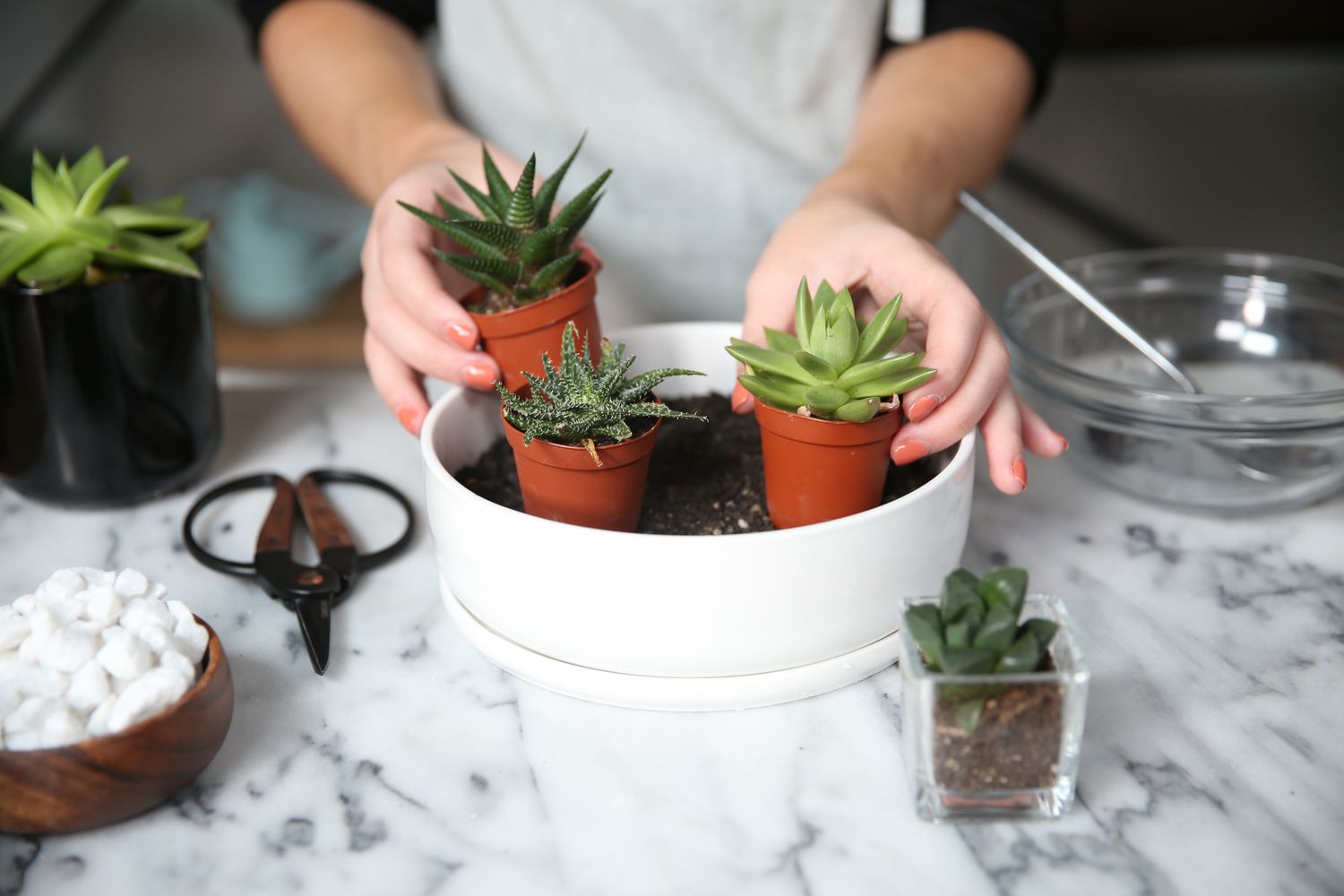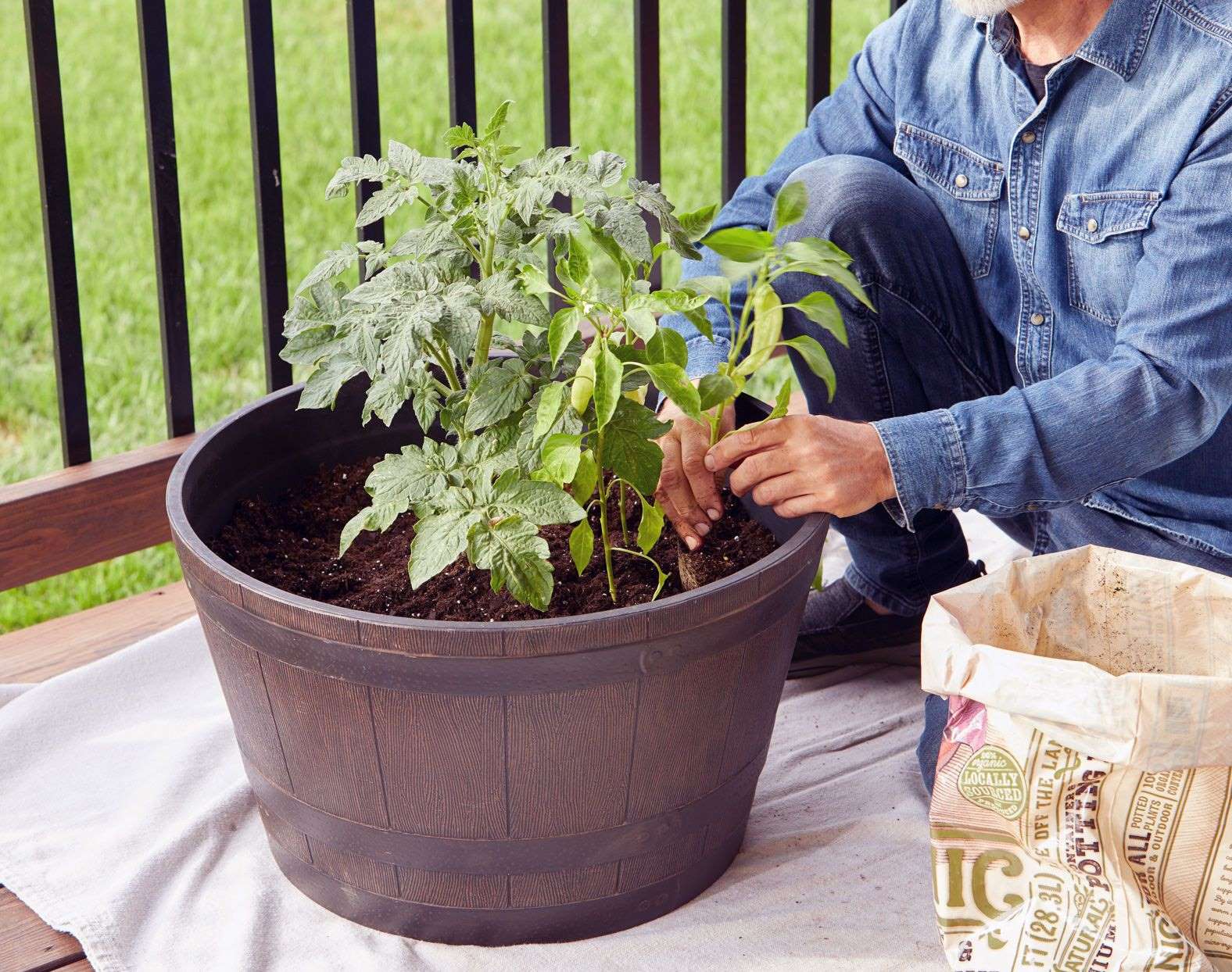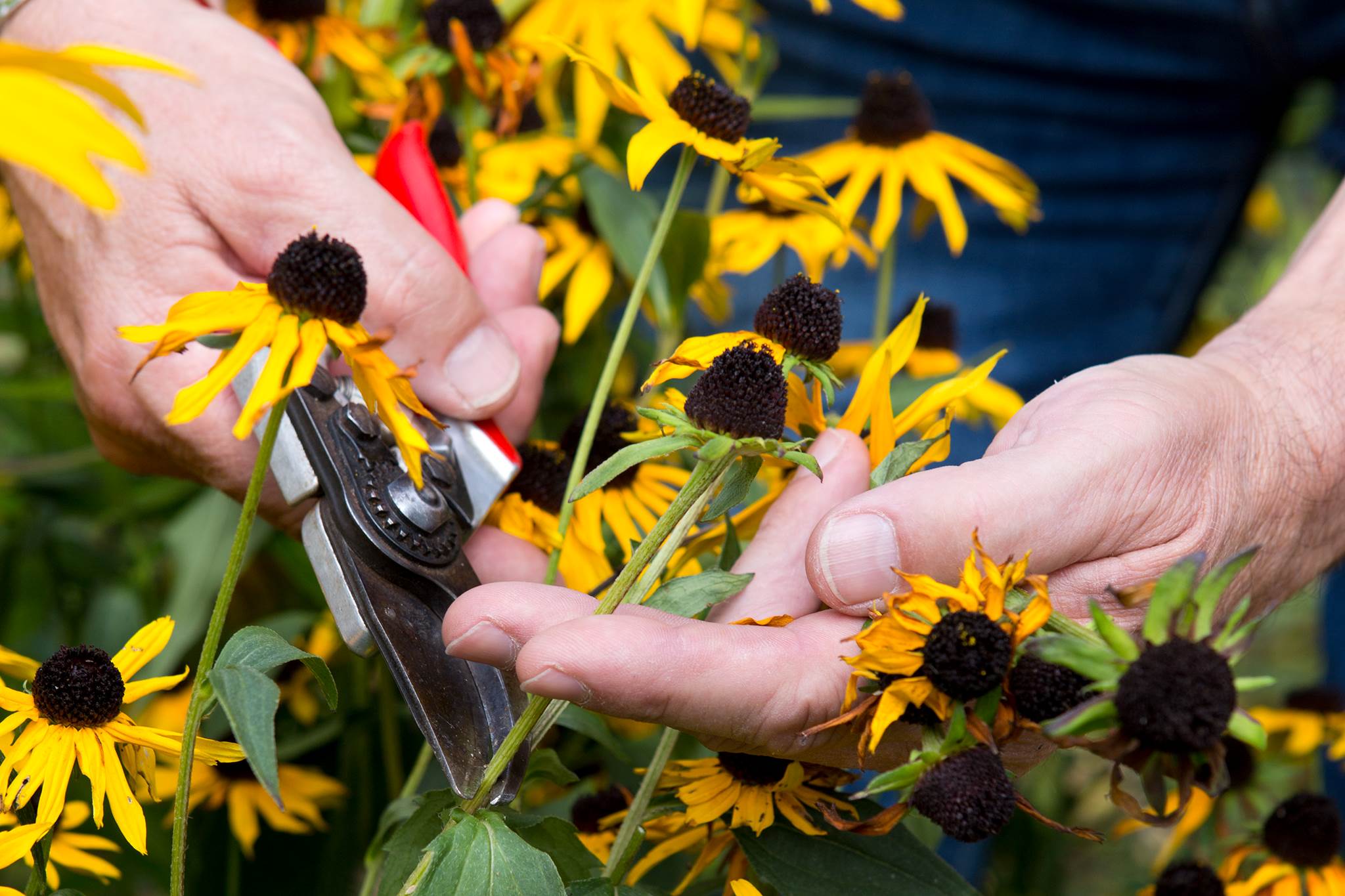Home>Types of Gardening>Ornamental Gardening>How To Plant Perennials In Pots
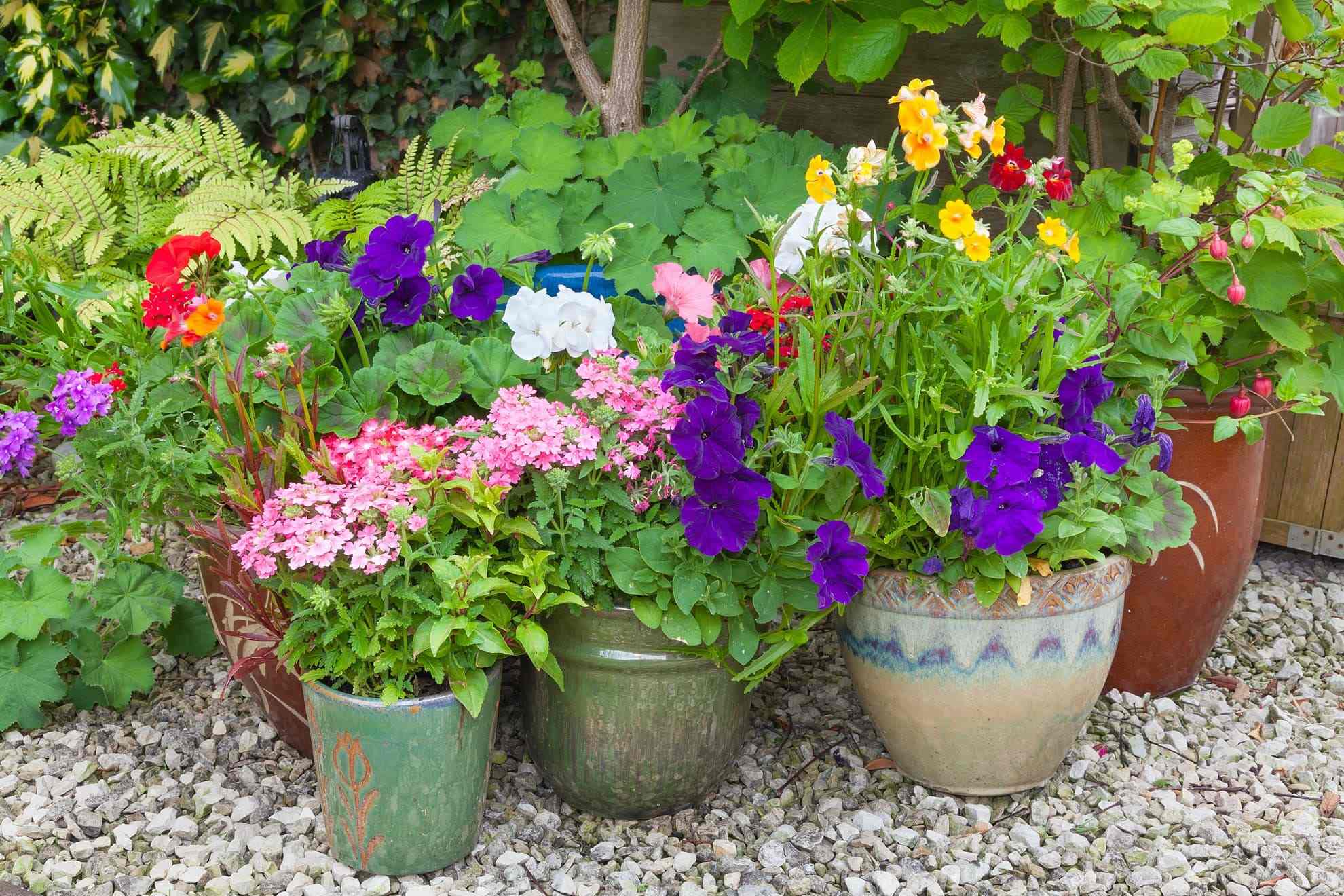

Ornamental Gardening
How To Plant Perennials In Pots
Modified: February 9, 2024
Learn how to successfully plant perennials in pots for a stunning ornamental gardening display. Expert tips and techniques for container gardening.
(Many of the links in this article redirect to a specific reviewed product. Your purchase of these products through affiliate links helps to generate commission for Chicagolandgardening.com, at no extra cost. Learn more)
Table of Contents
- Introduction
- Benefits of Planting Perennials in Pots
- Choosing the Right Container
- Selecting the Appropriate Soil
- Picking the Ideal Location for Potted Perennials
- Selecting the Right Perennial Plants
- Preparing the Pots for Planting
- Planting Perennials in Pots
- Watering and Fertilizing Potted Perennials
- Protecting Potted Perennials from Extreme Weather Conditions
- Maintaining and Caring for Potted Perennials
- Conclusion
Introduction
Ornamental gardening is a cherished hobby for many, allowing enthusiasts to transform their outdoor spaces into vibrant and visually appealing landscapes. While traditional gardening involves planting perennials directly in the ground, there is an alternative method that offers greater flexibility and versatility – planting perennials in pots.
Planting perennials in pots has gained popularity in recent years due to the numerous benefits it offers. Whether you have limited space, a desire to create moveable displays, or simply want to add a touch of beauty to your patio or balcony, potted perennials are a fantastic option.
In this article, we will explore the art of planting perennials in pots, guiding you through the process step-by-step. From choosing the right container and selecting the appropriate soil to picking the ideal location and selecting the right perennial plants, we will cover everything you need to know to create stunning potted displays.
So, whether you are a seasoned gardener looking to expand your repertoire or a beginner seeking to dip your toes into the world of ornamental gardening, read on to discover the secrets of successfully planting perennials in pots.
Benefits of Planting Perennials in Pots
Planting perennials in pots offers a range of benefits that make it an attractive option for gardeners of all levels of experience. Let’s take a closer look at some of these advantages:
- Flexibility: One of the biggest advantages of planting perennials in pots is the flexibility it provides. Unlike planting directly in the ground, potted perennials can be easily moved and rearranged to create new and exciting displays. This is especially useful for those with limited garden space or renters who want to take their beautiful plants with them when they move.
- Decorative Displays: Potted perennials can be used to create eye-catching displays on patios, balconies, or even indoors. By selecting a variety of perennial plants with different colors, textures, and heights, you can create stunning arrangements that add beauty and vibrancy to any outdoor or indoor space.
- Control over Growing Conditions: When you plant perennials in pots, you have more control over the growing conditions, including the soil quality, drainage, and sun exposure. This allows you to create optimal conditions for each plant, ensuring their health and longevity.
- Protection from Pests and Diseases: Potted perennials are less prone to pests and diseases compared to those planted directly in the ground. By keeping them elevated and away from the soil, you can reduce the risk of infestations and ensure a healthier growing environment for your plants.
- Extend the Season: With potted perennials, you can extend the gardening season by bringing the plants indoors during colder months or protecting them from excessive heat. This allows you to enjoy their beauty and continue nurturing them even during unfavorable weather conditions.
- Experimentation: Planting perennials in pots allows for experimentation with different plants, combinations, and designs. You can easily try out new varieties, mix and match different colors and textures, and experiment with various plant arrangements. This creative freedom adds excitement and variety to your gardening experience.
These benefits make planting perennials in pots a great option for those looking to add a touch of beauty and versatility to their outdoor spaces. With the ability to easily move and rearrange potted plants, control growing conditions, and create stunning displays, you can truly personalize your garden and showcase your creativity.
Choosing the Right Container
Choosing the right container is essential when planting perennials in pots. The container not only serves as a decorative element but also plays a crucial role in the health and growth of your plants. Here are some factors to consider when selecting the right container:
- Size: The size of the container is important as it determines the amount of space available for the roots to grow and the soil to retain moisture. Avoid using small containers that restrict root development and limit water retention. Opt for larger containers that provide ample room for the plants to thrive.
- Drainage: Proper drainage is vital to prevent waterlogged soil, which can lead to root rot and other diseases. Look for containers with drainage holes at the bottom to ensure excess water can escape. If the container you choose doesn’t have drainage holes, consider drilling some yourself to promote healthy root growth.
- Material: Containers come in a variety of materials, each with its own advantages and disadvantages. Terracotta pots are popular due to their natural look and breathability, allowing excess moisture to evaporate. Plastic containers, on the other hand, are lightweight and offer better insulation against extreme temperatures. Consider the specific needs of your plants and the local climate when selecting the container material.
- Appearance: The container you choose should complement the overall aesthetic you want to achieve in your garden. Consider the color, style, and texture of the container to ensure it enhances the beauty of your potted perennials and adds visual appeal to your outdoor space.
- Mobility: If you plan on moving your potted perennials frequently or want the option to rearrange your garden layout, consider the mobility of the containers. Look for containers with handles or wheels to make transportation easier.
When choosing the right container, remember to prioritize the needs of your plants. Consider their size and growth habits, as well as the environmental conditions they require. By selecting the right container, you provide an optimal growing environment for your potted perennials and set them up for success.
Selecting the Appropriate Soil
Selecting the right soil is crucial for the health and vitality of potted perennials. The soil not only provides essential nutrients but also promotes proper drainage and aeration. Follow these tips to ensure you choose the appropriate soil for your plants:
- Well-Draining Soil: Potted perennials require soil that drains well to prevent waterlogging and root rot. Avoid using heavy clay or compacted soil that holds water. Instead, opt for a well-draining potting mix that is specifically formulated for container gardening. These mixes usually contain a combination of organic matter, such as compost or peat moss, and vermiculite or perlite to improve drainage.
- Nutrient-Rich Soil: Perennials need ample nutrients to thrive. Look for potting mixes that are rich in organic matter, as they provide a good balance of nutrients and help retain moisture. You can also add slow-release granular fertilizer to the soil mix to ensure a steady supply of nutrients over time.
- pH Level: Different perennials prefer different pH levels in the soil. Check the pH requirements of the plants you are growing and choose a potting mix that matches those requirements. Most perennials thrive in slightly acidic to neutral soil, with a pH range of 6.0 to 7.0.
- Moisture Retention: While it is important to have well-draining soil, it should also retain enough moisture to keep the plants hydrated. Consider adding moisture-retaining agents, such as coconut coir or peat moss, to the potting mix to improve water retention without hampering drainage.
- Avoid Garden Soil: It is generally best to avoid using garden soil in containers as it can be too heavy and may contain pests, diseases, or weed seeds. Using a sterile potting mix specifically formulated for containers minimizes the risk of these issues and ensures a healthy growing environment for your potted perennials.
Remember to periodically check the moisture level of the soil and adjust your watering practices accordingly. Ensure the soil is evenly moist but not waterlogged, as overwatering can lead to root rot. By selecting the appropriate soil for your potted perennials, you provide them with the necessary nutrients and growing conditions to thrive and flourish.
Picking the Ideal Location for Potted Perennials
The location where you place your potted perennials can significantly impact their growth and overall health. Here are some factors to consider when selecting the ideal location:
- Sunlight: Most perennials thrive in full sun or partial shade. Observe the sunlight patterns in your outdoor space throughout the day to determine the best location for your potted perennials. If your plants require full sun, place them in an area that receives at least six hours of direct sunlight each day. For perennials that prefer partial shade, choose a spot with filtered sunlight or morning sun and afternoon shade.
- Temperature: Consider the temperature variations in your region. Some perennials are more sensitive to extreme heat or cold, so it’s important to choose a location that provides optimal temperature conditions. Avoid placing potted perennials in areas that are exposed to strong winds or prone to frost, as these conditions can cause damage to the plants.
- Proximity to Water Source: Keep in mind the proximity to a water source when choosing the location for your potted perennials. It is essential to ensure easy access to water for regular watering to keep the plants hydrated. Placing them near a hose or a water collection system will make it convenient to provide adequate moisture.
- Aesthetics: Consider the overall aesthetic appeal of your garden or outdoor space. Choose a location that complements the design and style you want to achieve. Potted perennials can be used to create focal points or enhance specific areas, so select a spot that enhances the visual appeal of your garden.
- Accessibility: If you plan on moving or rearranging your potted perennials frequently, ensure the location allows for easy accessibility. Avoid placing them in hard-to-reach or cramped spaces that make it challenging to maintain and care for the plants.
When choosing the ideal location for your potted perennials, it’s important to consider their specific needs and requirements. By providing the right amount of sunlight, suitable temperatures, and easy access to water, you can create optimal growing conditions for your plants and ensure their successful growth and blooming season after season.
Selecting the Right Perennial Plants
When it comes to selecting the right perennial plants for your potted garden, there are several factors to consider. By choosing plants that are well-suited for container gardening and complement your desired aesthetic, you can create stunning displays that thrive. Here are some tips to help you select the right perennial plants:
- Growth Habit: Consider the growth habit of the perennial plants you are interested in. Some plants have a clumping habit while others spread or trail. Choose plants that will fit well within the size and shape of your container and won’t outgrow their space. Additionally, consider how different plants will interact and complement each other within the same container.
- Light Requirements: Assess the amount of sunlight your chosen location receives and select perennials that are suitable for those light conditions. Some plants thrive in full sun, while others prefer partial shade. Matching the light requirements of the plants with your available sunlight will help ensure their health and vigor.
- Climate Adaptability: Consider the climate and local growing conditions when selecting perennial plants. Choose plants that are well-suited for your region’s temperature, humidity, and rainfall patterns. This will increase their chances of thriving and reduce the risk of disease or stress due to unfavorable weather conditions.
- Color and Texture: Perennials offer a wide array of colors and textures, so choose plants that complement your desired garden aesthetic. Consider the color palette you want to create, whether it’s vibrant and bold or soft and pastel. Additionally, think about the texture of the foliage, such as smooth, fuzzy, or variegated leaves, to add depth and visual interest to your potted garden.
- Maintenance: Assess the level of maintenance you are willing to commit to and select plants accordingly. Some perennials require regular deadheading, pruning, or dividing to thrive, while others are low-maintenance and require minimal intervention. Be realistic about the time and effort you can dedicate to plant care and choose plants that align with your gardening preferences.
Research specific perennial varieties or consult with local garden experts to identify plants that are well-suited for container gardening in your area. Consider the overall aesthetic you want to achieve, the growing conditions of your outdoor space, and your own preferences as you make your selections. By carefully choosing the right perennial plants, you can create captivating and thriving potted displays that bring beauty and joy to your garden.
Preparing the Pots for Planting
Before planting your perennials in pots, it is important to properly prepare the containers. Taking the time to prepare the pots ensures a healthy growing environment for your plants and sets them up for success. Here are the steps to follow when preparing the pots for planting:
- Clean the Pots: Start by cleaning the pots to remove any dirt, debris, or residue from previous plantings. Scrub the pots with warm soapy water and rinse thoroughly. This helps prevent the transfer of pests, diseases, and weed seeds to your new plants.
- Ensure Proper Drainage: Check the drainage holes in the pots and ensure they are clear and free from any blockages. Use a small drill or needle to remove any dirt or debris obstructing the holes, as proper drainage is essential for preventing waterlogged soil.
- Add a Drainage Layer: Place a layer of small rocks, pebbles, or broken pottery shards at the bottom of the pot to facilitate better drainage. This layer allows excess water to drain freely, preventing water from pooling at the roots of your potted perennials.
- Use High-Quality Potting Mix: Fill the pots with a nutrient-rich potting mix specifically formulated for container gardening. Avoid using regular garden soil, as it can be too heavy and may not provide adequate aeration and drainage. Fill the pots to about one inch below the rim, leaving enough space to water the plants without overflowing.
- Pre-Moisten the Soil: Before planting your perennials, slightly moisten the potting mix. This ensures that the soil is evenly hydrated and allows better root establishment once the plants are placed in the pots.
- Consider Adding Slow-Release Fertilizer: If your chosen potting mix does not already contain slow-release fertilizer, consider adding a granular fertilizer specifically formulated for container plants. This will provide a steady supply of nutrients to your perennials throughout the growing season.
By following these steps to prepare your pots for planting, you create a healthy and conducive growing environment for your potted perennials. Properly cleaned pots with adequate drainage, high-quality potting mix, and added nutrients help ensure that your plants have the necessary support and resources to thrive and flourish in their containers.
Planting Perennials in Pots
Once you have prepared your pots, it’s time to plant your chosen perennials and bring your potted garden to life. Follow these step-by-step instructions to plant perennials in pots:
- Select the Plants: Carefully remove the perennials from their nursery containers and gently loosen the roots. Inspect the plants for any signs of damage or disease before proceeding.
- Dig the Planting Hole: Create a planting hole in the center of the pot that is slightly larger and deeper than the root ball of the plant. Make sure the hole is deep enough to accommodate all the roots without cramming or bending them.
- Place the Plant: Lower the plant into the hole, making sure it sits at the same level it was previously planted. Gently spread out the roots in the hole, ensuring they are not curled or twisted. The crown of the plant, where the stems meet the roots, should be just above the soil surface.
- Backfill with Soil: Fill the hole with the potting mix, gently pressing it down around the roots to eliminate any air pockets. Be careful not to pack the soil too tightly, as this can hinder water drainage and root growth.
- Water Thoroughly: After planting, water the potted perennials thoroughly. This helps settle the soil around the roots and ensures proper hydration of the plants. Water until you see excess water draining out of the bottom of the pot.
- Label and Arrange: To keep track of the plants in your potted garden, consider labeling each container with the name or variety of the perennial. Arrange the pots in your desired pattern or display, taking into consideration the growth habit and height of the plants.
Remember to provide the appropriate care and maintenance to your potted perennials, including regular watering, fertilizing, and monitoring for pests and diseases. Keep in mind the specific needs of each plant, such as sun exposure and pruning requirements. With proper planting and ongoing care, your potted perennials will thrive and bring beauty to your garden year after year.
Watering and Fertilizing Potted Perennials
Watering and fertilizing are essential aspects of caring for potted perennials. Proper watering ensures that the plants receive adequate hydration, while fertilizing provides them with the necessary nutrients for healthy growth. Here are some guidelines for watering and fertilizing potted perennials:
Watering:
- Monitor Soil Moisture: Regularly check the moisture level of the soil by inserting your finger about an inch deep into the potting mix. Water the plants when the top inch of the soil feels dry to the touch.
- Deep Watering: When watering, aim to thoroughly moisten the entire root ball. Water should penetrate the soil and drain out of the bottom drainage holes, ensuring that the roots receive sufficient moisture.
- Avoid Overwatering: While it is important to provide enough water, overwatering can be detrimental to potted perennials. Avoid letting the pots sit in standing water, as this can lead to root rot. Ensure proper drainage and allow the top inch of the soil to dry out between waterings.
- Adjust for Environmental Factors: Environmental conditions such as temperature, humidity, and sunlight can affect the water needs of your potted perennials. Hot and dry weather may require more frequent watering, while cooler and more humid conditions may necessitate less frequent watering.
Fertilizing:
- Choose the Right Fertilizer: Select a slow-release or balanced granular fertilizer specifically formulated for potted plants. Follow the manufacturer’s instructions for application rates and frequency.
- Timing: Begin fertilizing about a month after planting and continue to fertilize throughout the growing season, following the recommended schedule for the specific fertilizer you are using.
- Application: Sprinkle the fertilizer evenly on the soil surface around the plants, taking care to avoid direct contact with the foliage. Water the plants after fertilizing to help distribute the nutrients into the root zone.
- Observe and Adjust: Monitor the growth and appearance of your potted perennials. If you notice signs of slow growth or nutrient deficiencies, such as yellowing leaves or poor flowering, you may need to adjust your fertilization routine or provide additional supplemental feeding.
Remember that the watering and fertilization needs of potted perennials may vary depending on factors such as plant species, container size, and environmental conditions. Pay close attention to the specific requirements of the plants you are growing and make adjustments as necessary. By providing proper watering and fertilization, you can ensure the health and vitality of your potted perennials, leading to beautiful and thriving plants.
Protecting Potted Perennials from Extreme Weather Conditions
Potted perennials are more vulnerable to extreme weather conditions compared to their counterparts planted in the ground. It is important to take steps to protect them from adverse weather to ensure their survival and well-being. Here are some strategies to safeguard your potted perennials:
Excessive Heat:
- Move to Shade: When temperatures rise, potted perennials can become susceptible to heat stress and dehydration. Move the pots to a shaded area, away from direct sunlight during the hottest parts of the day. This helps prevent the roots from overheating and reduces water loss.
- Water Regularly: Increase the frequency of watering during hot weather to ensure the plants remain adequately hydrated. Check the soil moisture regularly and water deeply as needed, allowing the water to reach the roots.
- Mulch: Apply a layer of organic mulch on top of the potting mix to help keep the soil cool and to retain moisture. This provides insulation and reduces evaporation, minimizing the impact of high temperatures on the plants.
Frost and Cold:
- Bring Indoors: If frost or freezing temperatures are forecasted, consider moving potted perennials indoors to a protected area, such as a garage or basement. This helps shield them from extreme cold and prevents damage to the foliage and roots.
- Provide Insulation: For larger potted plants that cannot be moved indoors, provide insulation by wrapping the pots with burlap or bubble wrap. This creates a barrier against the cold and helps maintain more stable soil temperatures.
- Elevate Pots: To prevent the roots from freezing, elevate the pots slightly by placing them on small risers or blocks. This helps improve air circulation and prevents the pots from sitting in cold and potentially damaging water runoff.
Extreme Winds:
- Secure Pots: Ensure that potted perennials are placed in sturdy containers and are securely positioned. Strong winds can easily topple pots, causing damage to the plants. Consider using heavy pots or adding weights to keep them stable.
- Provide Windbreaks: If your outdoor space is prone to strong winds, consider creating windbreaks. Position tall plants, trellises, or fences strategically around your potted perennials to provide some protection from the wind.
By taking these proactive measures to protect your potted perennials from extreme weather conditions, you can help ensure their survival and maintain their overall health and beauty. Stay vigilant with weather forecasts and be prepared to take appropriate actions to safeguard your plants accordingly.
Maintaining and Caring for Potted Perennials
To keep your potted perennials healthy and thriving, regular maintenance and care are essential. By following these guidelines, you can ensure that your plants continue to flourish season after season:
- Pruning and Deadheading: Regularly remove spent blooms and trim back any dead or damaged foliage to encourage new growth and maintain the overall shape and appearance of the plants. This also helps prevent diseases and pests from taking hold.
- Dividing (If Necessary): Some perennials may require dividing to maintain their vigor and prevent overcrowding. Check the specific requirements of each plant variety, and if needed, divide them every few years during their dormant period. This allows them to continue growing and flowering optimally.
- Weeding: Keep an eye out for any weeds that may appear in your potted perennials. Regularly remove them by hand or use a small gardening tool to prevent competition for nutrients and space.
- Monitor and Control Pests: Inspect your potted perennials regularly for any signs of pests, such as aphids, slugs, or snails. If an infestation is detected, employ appropriate pest control methods, such as organic insecticides, manual removal, or introducing natural predators.
- Support Structures: As your potted perennials grow, they may require additional support to prevent them from flopping over. Use stakes, cages, or trellises to provide the necessary support and keep the plants upright and structurally sound.
- Monitor for Diseases: Keep an eye out for any signs of diseases, such as leaf spots, wilting, or discoloration. If you notice any symptoms, promptly identify the issue and take appropriate steps to treat it, such as removing affected foliage, improving air circulation, or applying organic fungicides.
- Seasonal Care: Adjust your care routine according to the changing seasons. In hot weather, increase watering and provide shade if needed. During colder months, reduce watering and protect the plants from frost or freezing temperatures.
- Regular Feeding: Continue to fertilize your potted perennials throughout the growing season according to the instructions provided by the fertilizer manufacturer. This ensures that the plants receive a steady supply of nutrients to support their growth and flowering.
- Regular Inspections: Regularly inspect your potted perennials for any signs of stress, nutrient deficiencies, or issues with watering. Adjust your care routine accordingly to address any problems promptly and maintain the overall health and vitality of your plants.
By following these maintenance and care guidelines, you can ensure that your potted perennials remain healthy, beautiful, and vibrant. Regular attention and care will help them thrive and provide you with a rewarding and visually pleasing garden for years to come.
Conclusion
Planting perennials in pots offers a wonderful opportunity to bring beauty, versatility, and creativity to your ornamental gardening endeavors. By carefully selecting the right container, appropriate soil, and ideal location, you can create stunning potted displays that enhance any outdoor space. The flexibility of potted perennials allows you to easily rearrange and experiment with different plant combinations, showcasing your personal style and artistic flair.
Remember to provide proper care and maintenance to your potted perennials, including regular watering, fertilizing, pruning, and protection from extreme weather conditions. By attending to their specific needs and monitoring for any signs of stress or disease, you can ensure the long-term health and vitality of your plants.
Whether you have a spacious garden or a small balcony, planting perennials in pots opens up a world of possibilities. You can create stunning focal points, vibrant splashes of color, or even a mobile garden that can be enjoyed on the move.
So, go ahead and embark on your potted perennial gardening journey. Let your creativity blossom and your passion for ornamental gardening flourish as you create breathtaking potted displays that will bring joy and beauty to your outdoor space year after year.
